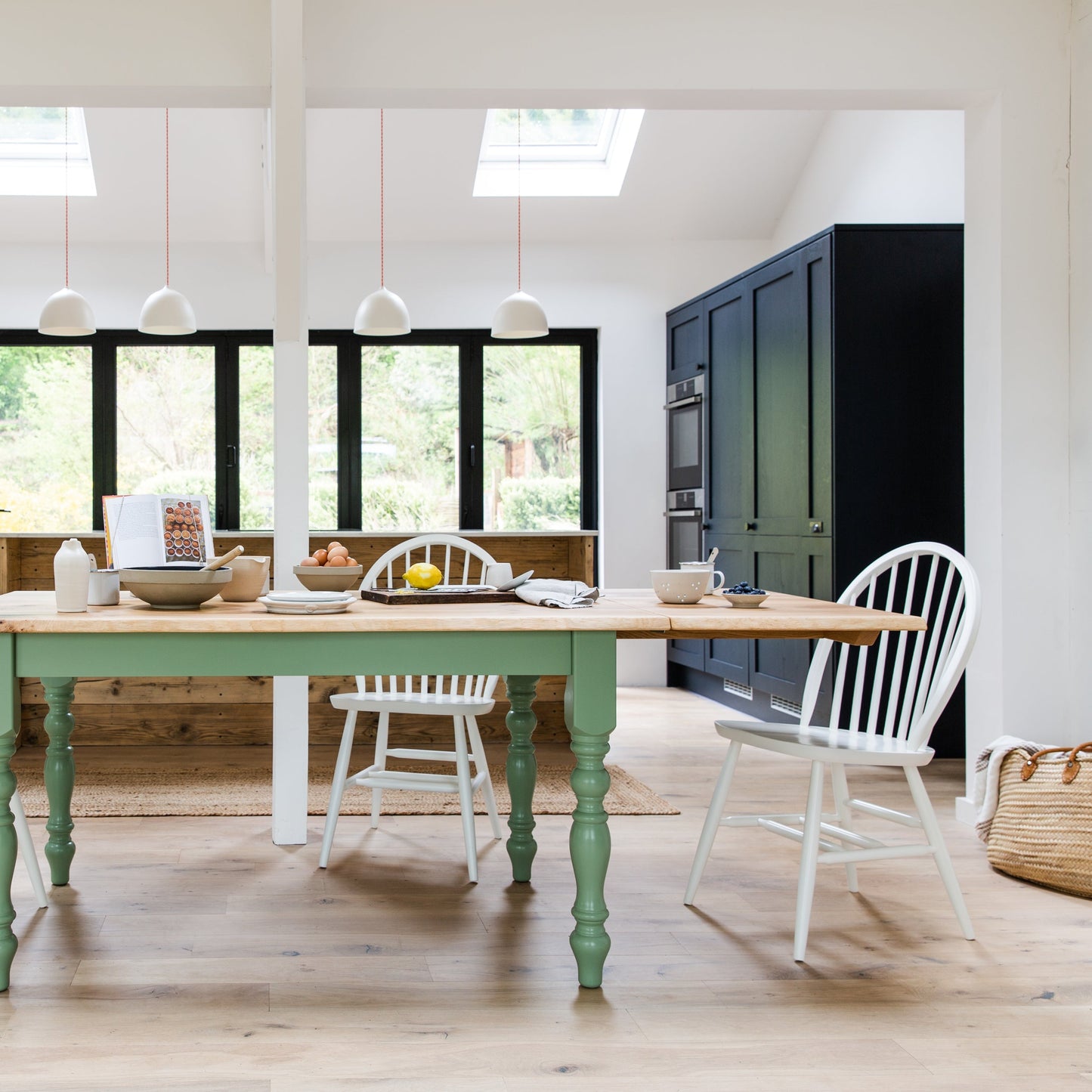
With the days getting longer and warmer, plants growing like fury and so are the weeds. There are plenty of jobs to be getting on with this month, as Sally Watts explains below, but don't forget to make time to sit and enjoy your garden too! Bluebells will be coming to an end soon, so try and get a lockdown walk in to see them if you can.
Trees/Shrubs
Late spring is a good time to coppice or pollard Eucalyptus.
Prune Olive trees in late spring early summer when the weather is milder but before flowering.
Large bay laurel trees that are well established are always best pruned in late spring and during a dry spell. If you are looking to reduce the size of your bay tree without spoiling its shape altogether, remove only a maximum of 25 per cent of the tree in the first year.
Topiary Bay trees in pots can be trimmed with secateurs during summer to encourage a dense habit and maintain a balanced shape. Prune new shoots to a bud facing in the direction of the desired growth. Give it a good water and feed.
Prune spring flowering shrubs after flowering such as Ribes and Kerria. Remove one stem in three from Kerria and Spiraea ‘Arguta’ and shorten the other flowered stems to a suitable side shoot. Evergreens such as Viburnum tinus can also still be trimmed this month.
Prune out frost damage from affected evergreen shrubs.
Prune hardy fuchsias back to the base if you haven’t already done so. Cut out all the old shoots back to the base provided there is new growth at the bottom of the plant. If there are no shoots at the base, cut just above the lowest set of leaves. The same can be applied to Penstemons and Santolinas.
Hedging
Formal evergreen hedging such as Yew responds well to a light trim in May, even if it has not reached its final desired height (in which case trim the sides, but NOT the tops). You are then encouraging the plant to grow more bushy, but (hopefully) not endangering any shorn shoots by exposing them to frost.
They used to say you should clip your box hedges on Derby Day but with the rise of box blight, it is better to do this in winter when fungal spores are dormant and will not attack fresh wounds on leaves and stems. However, if you prefer to follow tradition then trim by the end of the month. Choose a dull day and dispose of clippings and do not put on the compost heap.
Shears make a better job than electric hedge cutters.
Climbers
Keep checking on all climbers like Honeysuckle, Wisteria, Clematis, and Jasmines because they have massive growth spurts at this time of year and if you do not keep tying in new shoots you will find that they tangle badly and/or become irretrievably involved with neighbouring plants, potentially smothering them in the process. Keeping the shoots well spaced will make for better flowers because you will expose each shoot to the sunlight.
Prune out overcrowded and dead stems of early flowering clematis such as Alpinas and Macropetalas after flowering is over and tie in new shoots.
Clematis Montana is spectacular in May. Once the flowers are over, towards the end of the month, you can prune montanas hard if they are growing too large. As vigorous climbers they will envelop large trees, sheds and walls in spectacular fashion and do not need annual pruning but if you are trying to confine them to a smaller area or you are finding that the flowers are all at the top and not at the base of the plant, then untangle the shoots where possible and remove any dead or diseased wood. Then cut any stems back to where you want. Next year it will flower even more abundantly.
Prune wall flowered pyracanthas now by removing any shoots coming out from the wall and shortening other new growth to about 3 inches. This encourages spur formation, and increased flowering relative to green growth.
Continue to tie in shoots sent out by rambling or climbing roses. Maximise the number of flowers produced by keeping the shoots horizontal.
Pest control
Check for infestations of aphids on roses. Early infestations can be dealt with by washing them off the buds with a hose onto the soil, where they can be dealt with by other beneficial insects. A home made remedy of soapy water of one teaspoon of washing up liquid in 3 litres of water will also help to control the problem if you are avoiding insecticides. For more serious attacks insecticides may need to be used.
Inspect lilies for red lily beetles as the larvae can strip plants in days. Can be controlled by hand removal.
Vine weevil can be a problem particularly on heucheras kept in pots. Plants badly affected can suddenly look sickly and if given a gentle tug they become detached from the root. Best to discard the whole plant . Tip out the root ball of suspected plants and look out for the creamy orange headed maggots which curl up into a ‘C’ shape. There are various chemical and biological controls available.
Continue to protect lily, delphinium, hosta and other susceptible plants from slugs and snails.
Look out for viburnum beetle which cause unsitely lacey holes in the leaves of Viburnum opulus and tinus as mentioned in April gardening tips.
Bulbs
Deadhead tulips and daffodils.
Lift and divide over crowded clumps of daffodils after they have flowered.
Apply a liquid fertiliser to spring bulbs after they have flowered, to encourage good flowering next year, and help prevent daffodil blindness.
Allow the foliage of daffodils and other spring-flowering bulbs to die down naturally.
Herbaceous Perennials
Cutting back clumps of spring flowering perennials such as Pulmonaria can encourage a fresh flush of foliage. If over crowded, now is the time to lift and divide them, also Bergenias, Primroses etc.
You may have heard of the “The Chelsea chop” which is a useful technique that helps control the size, shape and flowering time of certain summer flowering plants, and late May (around the time of the RHS Chelsea Flower Show) is the perfect time to do it.
It can delay the flowering of perennials by four to six weeks and ensure your borders bloom over a long period .You can either prune all the stems on a clump, which delays all the flowers, or just half of them, which spreads the plant’s flowering over a longer period.
Try it on Achillea, Aster, Campanula, Echinacea, Helenium , Phlox, Penstemons, Sedums and Rudbeckias.
After you have cut back your plants, make sure you give them a thorough watering and some feed.
Grasses
If you need to divide grasses it is a good time to do this early in the month now the soil has warmed up. Grasses hate being moved in autumn and will probably not survive.
Lawns
Mow regularly and continue adding clippings to the compost heap.
Apply a high nitrogen summer lawn fertiliser to encourage a healthy-looking lawn, and if moss is a problem choose a combined moss killer and fertiliser.
Sowing new lawns or over-seeding dead patches can still be carried out in early May.Ensure new lawns (either from turf or seed) do not dry out during dry spells. Keep off them for as long as possible to allow establishment. Don't worry over a flush of weed seedlings in newly seeded turf. These will disappear once regular mowing begins.
Miscellaneous
Put supports in place if not already done so for herbaceous plants before they are too tall, or for those - like peonies - that produce heavy blooms.
Stake Delphiniums to protect them from the wind. Place bamboo canes around the plants in tall tripods and lash together with string. As the foliage grows and spires rise, the canes with be hidden by the growth.
Summer bedding can be planted in the garden once all danger of frost has passed.
Keep on top of watering, particularly in pots and containers and those plants you have divided and replanted in your borders.
Liquid seaweed or tomato food is beneficial on a regular basis to plants in pots, also plants such Agapanthus grown in borders love a feed.
Keep newly planted hedges well watered in May and June.
Continue to keep on top of weeding as this can quickly get out of hand.
Do your best to avoid disturbing nesting birds in trees, shrubs and hedges.
Sally Watts is a Professional Garden Designer who has been featured in national magazines for her fabulous work on plots throughout the country. For more tips and inspiration go to her website: sallywattsgardendesign.co.uk

